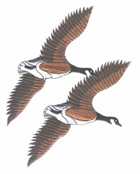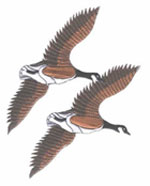The Angola Conflict 1975/76
Douglas 'Canada' Newbys ill fated last patrol 14th February 1976
Exstract taken from 'Fire Power' by Dave Thomkins and Chris Dempster
Quote. In less than 30 seconds, five of the seven men in the vehicle, George Bacon, Malcolm Dimmock, John Cashmore, Dickens, and Nilsson had been shot to death. Gary Acker fell from the back, his leg smashed by a bullet. Up front 'Canada' was mortally wounded; he died, or was killed, minutes later. Unquote
Click on to photo to enlarge repeat to shrink
| Can you name the merc on the left? |
|
|
In the book in the left hand side photo the guy on the right wearing the T-shirt with the word Commando wrote across the front is listed as Nilsson.
The book goes on to say that the six dead mercenaries (three of whom had volunteered to fight without pay) were loaded into a truck and driven to Cuimba. The bodies were thrown in a heap on top of each other and placed on display for the benefit of the Cuban and Eastern block war correspondents. The photo on the right.
Fellow Portugueese Mercenary Pedro Marangoni has since identified the photo of Nilsson as that of his close friend Nelson. Pedro has a reputation for telling the truth and is trusted by many. We on this site believe him to be correct.
This is one of Pedro's photos
Click on to photo to enlarge repeat to shrink
A poor Google Tanslation
Morro dos Asphalts.
Colonel Santos e Castro the head of the Portuguese Command wearing a black sweater in the centre of the photo. Behind him is Nelson, with his hand on the shoulder of Peter Marangoni.
In 1974 the situation of the Portuguese army in Mozambique was unsustainable. When the military took power in Lisbon after the Carnation Revolution and gave the order to disarm their own troops, many of the military tried to resist. One of them, Nelson, a member of a company of commandos, the elite of the Portuguese army, deserted and took refuge in Rhodesia. Determined to continue his fight he enlisted as a volunteer in the ranks of the FNLA.
After the intervention of the Cuban regular army and the battle of Quifangondo, on the 11th February 1976, the Portuguese FNLA fighters moved out of Angola through Zaire. Leaving the scene of war and an enemy that greatly surpassed their effective techniques. They dispersed and while some returned to their own countries, others tried to find new ways to restart their lives. Nelson was the only one to return to Angola.
Pedro Marangoni Article Posted on havanaluanda.wordpress.com
And taken from Pedro's book
...............................................
A poor Google translation taken from Pedro's Book regarding Nelson
When Holden Roberto tried to replace the Portuguese command with European and American mercenaries, Nelson was hospitalised in Kinshasa being sick with malaria. However he decided to return to fight alongside the group of newly arrived foreigners. His friend and fellow partner in war, Peter Marangoni tried to dissuade him.
But Nelson was, he told me, excited by the offensive that the mercenaries naively promised although they were totally unaware of the situation in Angola. I tried to talk him out of the idea, but he was always bold and ignorant of fear, remained in Zaire, was the only special command FNLA not to travel.
The less experienced mercenaries set out to combat the well organised Cuban troops, presumably digesting certain positions on a front that no longer existed: the soldiers of the FAR-FAPLA had broken every line and all resistance. The FNLA guerrilla army existed only on maps of the top officials in Kinshasa. Nelson inexplicably closed traveling in a jeep, which did not allow them to react to an emergency situation. They were swept by a machine gun 12.7 Cubans.
(12.7-mm projectile is able to penetrate not only the sheet metal of a jeep, but also of any vehicle, or LAV, is also capable of cutting in two a human or a tree).
In a documentary filmed by the Film Studies of the FAR, Nelson's face appears between the British mercenaries occupying the vehicle. It is in the minute 5:30 in this video.
The memory of Nelson is the tribute that can now pay their companions, who fought alongside him and they did in the other side.
We appreciate Pedro Marangoni's help with this article. For more information regarding the time and participants you can check out his book 'The choice of the sword'.
|



